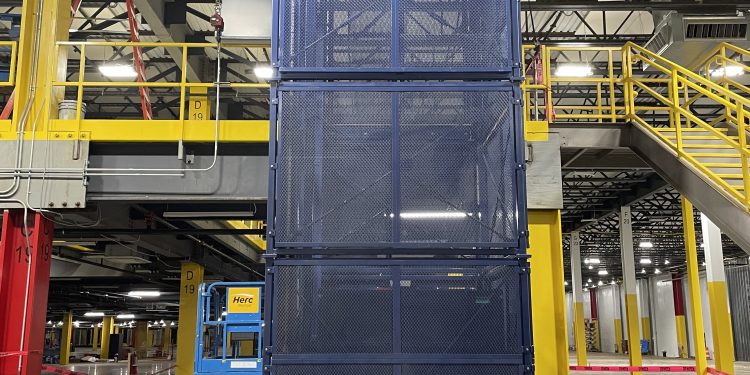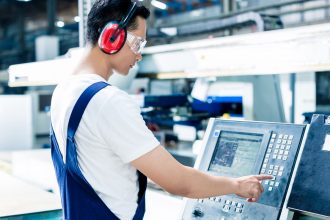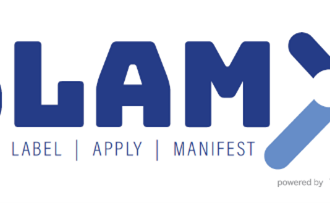Why a Vertical Reciprocating Conveyor Can Play a Critical Role in SLAM Operations

Many warehouses all over the U.S. are expanding their fulfillment centers due to high demand from online shopping. They are investing in equipment, automation, and software to assist in the variety of functions that complete order fulfillment from picking, sorting, packaging, and shipping. One of the areas of expansion is the critical SLAM area (Scan, Label, Apply and Manifest). SLAM is the last stop between packing and before outbound sortation in the order fulfillment process. This area is highly active and key to the overall success of e-commerce fulfillment operations.
As warehouses are investing in material handling systems like conveyors, carousels, palletizers, sorters, etc. to interface with fulfillment processes, they are also looking to Vertical Reciprocating Conveyors (VRCs) as an essential part of their operations. This holds true for the SLAM process where a VRC can be incorporated into the system for a safe and reliable means to transfer packing materials from mezzanine to the SLAM areas.
The Right Equipment for SLAM Operations
Warehouses that are expanding space are adding mezzanine structures to maximize storage of the supplies they use in their daily fulfillment operations. These mezzanines are being strategically placed in highly active areas such as SLAM where packaging and labeling materials can be stored and easily accessed. A VRC is a valuable solution to transport and retrieve these materials to and from the mezzanine level. By using a VRC, warehouses are creating a more productive and streamlined working environment. These extremely versatile and economical material lifts offer a variety of benefits, including:
- Quick and efficient access to your inventory
- More cost-effective than freight elevators
- Operates within a small footprint
- Avoids safety issues associated with forklifts and pallet jacks
- Reliable transit of high-capacity loads to mezzanines or upper-level storage areas
- Extremely durable and easy to install
VRCs are offered in both mechanical and hydraulic options. Mechanical VRCs can lift loads in excess of 20,000lbs, accommodate precision positioning, and are ideal for use with high speed, high-capacity, or automated systems. Hydraulic units can lift 6,000lbs and are ideal for lighter material handling, inventory, and storage use. VRCs are designed to meet or exceed ASME B20.1 safety requirements for conveyors and related equipment.
Ultimately, a VRC is a good alternative when looking to integrate solutions that will drive operational efficiencies at the SLAM area.
More information about Scanning, Labeling, Applying, Manifesting:
Better Data Equals Better Labeling And Tagging
Podcast: Transitioning From Manual To Automated SLAM (The Last 100 feet)
Offsetting Labor Shortages with SLAM
To learn more about MHI’s SLAM industry group: www.mhi.org/slam



